Anthurium papillilaminum Care. The Anthurium Papillilaminum plant, scientifically known as Anthurium Papillilaminum Croat, is prized for its beautiful olive-green leaves and lovely appearance.
The plant also gives rise to small spadix-like blooms that add to its appeal throughout the year.
The Anthurium Papillilaminum plant is not much of a hassle. Experts and beginners can both manage their care routine pretty well.
Let’s find out more about the Anthurium Papillilaminum plant care below.
Anthurium papillilaminum Takeaways
| Species | Anthurium papillilaminum |
| Synonyms | Anthurium papillilaminum Croat |
| Family | Araceae |
| Genus | Anthurium |
| Growth | Upright petioles and long velvety, heart-shaped leaves |
| Height | 3 feet |
| Width | 2 feet |
| Soil | Well-draining organic and fertile soils containing perlite and orchid bark |
| Watering | Every 7 days |
| Light | Bright indirect |
| Temperature | 70 °F to 90 °F (21-32 °C) |
| Humidity | 60-80% |
| Fertilizer | Fertilize once a month in spring and summer |
| Propagation | Stem cuttings, root division, from seeds |
| Toxicity | This plant is toxic to cats and dogs as well as humans. Anthuriums contain calcium oxalate crystals. |
Anthurium papillilaminum Care
The Anthurium papillilaminum is a slow grower, requiring bright, dappled sunlight and moderate watering once a week. The ideal humidity is 60% – 80%. Provide a temperature between 70° F – 90 °F (21-32°C). Provide well-draining organic and fertile soils containing perlite and orchid bark. Fertilize once a month in spring and summer. Repot the plant when it grows to twice its size or outgrows its pot.
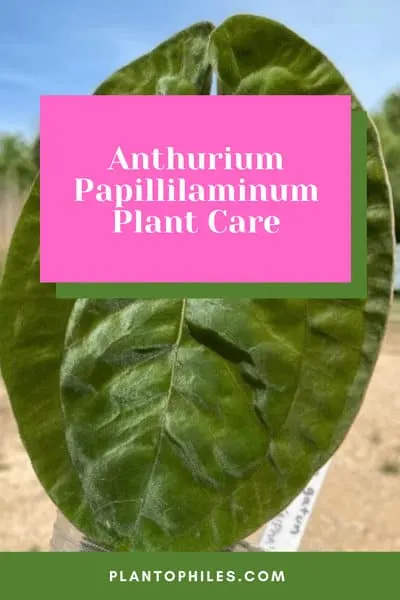
Table of Contents
Anthurium Papillilaminum Growing Guide
Soil
The Anthurium Papillilaminum plant likes organic, nutrient-rich soil with good drainage. The soil mix should retain sufficient moisture to thrive and remain hydrated.
Adding some perlite or coco coir increases the soil’s moisture-retaining content.
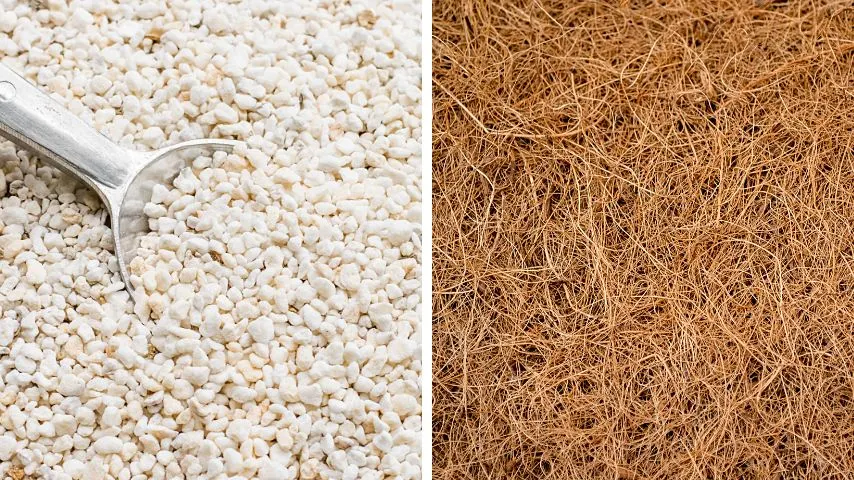
Mix one part vermicompost, coconut husk or coco coir, half-part perlite, and one-third peat moss to make the ideal potting mix.
Also, maintain a pH of about 5.5 – 6.5 for the Anthurium Papillilaminum plant to remain healthy and fresh.
Refresh the soil’s ingredients every few months or years, depending on your plant’s size.
Water
Water about once a week indoors in general conditions. Reduce watering in winter.
If the weather is warm in summer, water twice or thrice a week.
The Anthurium papillilaminum plant has watering routine similar to other Anthuriums.
However, please add water in hot and humid areas every two to three days, depending on the temperatures and humidity.
You do not have to add water during the dormant months, but don’t shy away if the soil seems too dry.
But please ensure proper drainage and wipe your Anthurium Papillilaminum plant’s leaves once you are done.
Please avoid overwatering as that can cause problems for the Anthurium Papillilaminum plant, such as water-stressed roots and discoloration.
On the other hand, dried soil leads to stunted growth. Therefore, please maintain a balance.
Light
The Anthurium Papillilaminum plant prefers bright, dappled sunlight throughout the day, regardless of the season.
Without ample sunlight, the plant starts dropping leaves or does not produce any blooms.
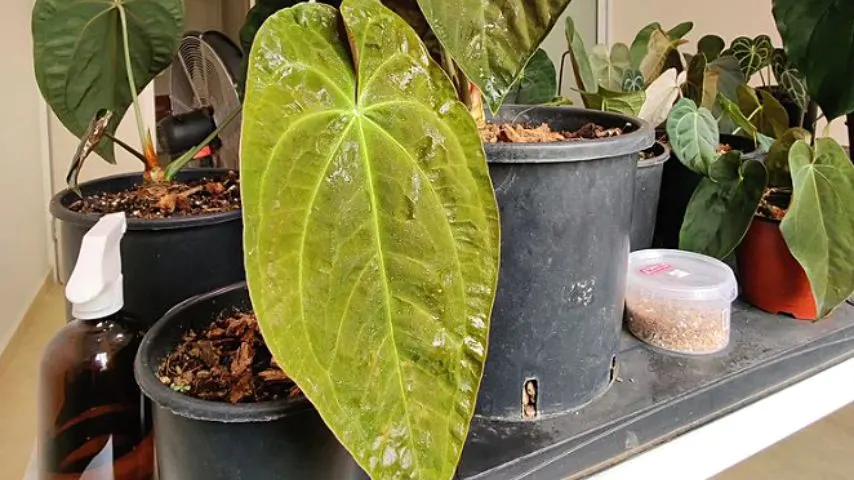
In the wild, the Anthurium papillilaminum plant grows under some shade. You can mimic these conditions by placing the plant in front of a window, curtain, or under a tree.
However, the best growth is best determined by the time of the year and the plant’s location.
Excess light can cause brown tips and crisp and dry leaves, whereas low light leads to wilting and leggy stem growth.
Place the Anthurium Papillilaminum plant in indirect sunlight to avoid these problems.
Temperature
The Anthurium Papillilaminum plant is tropical and likes moderate temperatures and humidity.
The ideal temperature range is 70 °F to 90 °F (21-32 °C) during the day and nothing lower than 60° F (15.5° C) at night.
They are easy to grow in cities with temperatures higher than 50° F (10° C) throughout the year; this includes USDA zones 11 – 12.
Anything lower may cause yellowing of the leaves, discoloration, or slow growth.
In contrast, temperatures over 95° F (35° C) cause leaf transpiration.
Humidity
Humidity is another important determinant for any plant. The Anthurium papillilaminum thrives in 60% – 80% humidity indoors and outdoors.
Such humidity levels may be absent in some homes naturally.
Therefore, getting a humidifier is an excellent idea to vamp up the moisture levels.
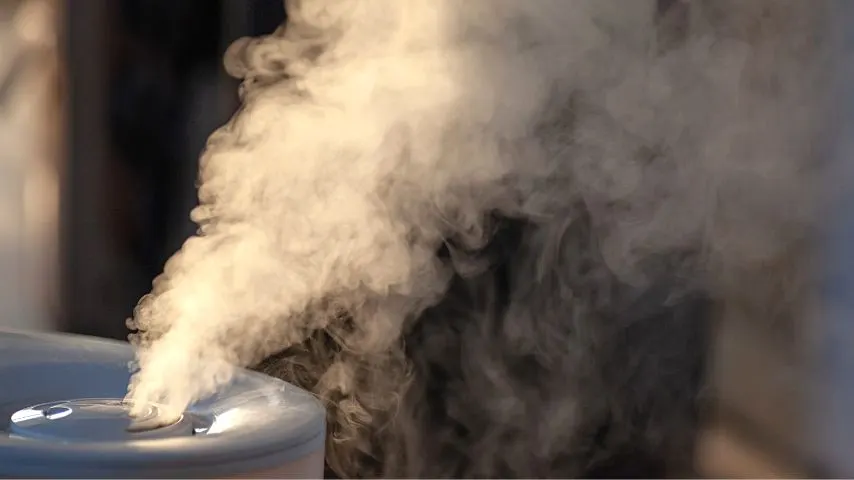
Fertilizer
The right fertilizer is vital for pretty blooms and a healthy Anthurium Papillilaminum plant.
Add a liquid, high-quality fertilizer for Anthuriums every 1-2 months. Skip feeding the plant in the winter season, as there is no growth during this period.
The Anthurium Papillilaminum plant rarely suffers due to overfertilization.
You can also add substances like manure and chicken litter to promote new growth further.
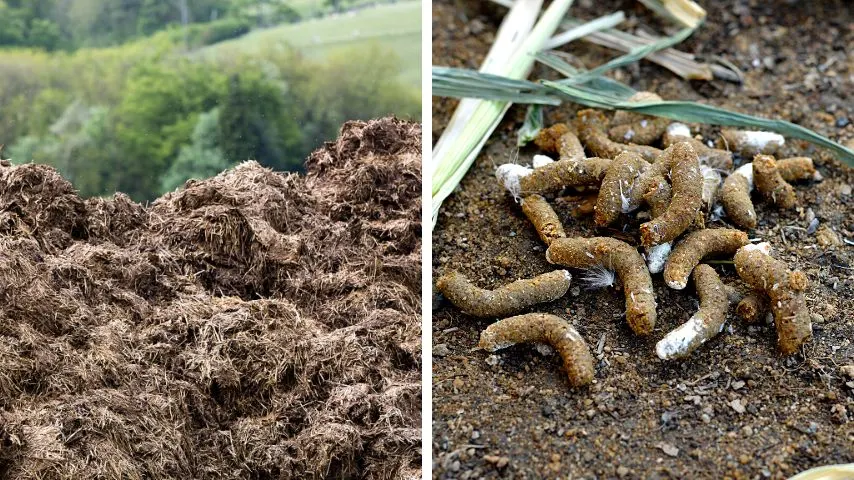
Repotting
A rough rule to stick to when repotting the Anthurium papillilaminum plant is to repot when it is twice its original size.
Alternatively, you can transfer it to a larger pot when it is over 20 inches (120 cm) in a 5-inch (60 cm) pot.
Ensure the new pot is at least 2 inches (24 cm) larger than the old one.
You may add some organic matter and water if you haven’t added any recently.
Also, avoid repotting a freshly bought plant. Allow it to rest and adjust to its new home for about 3 – 7 days before transferring it.
Pruning
The papillilaminum plant looks high-maintenance but survives well even with a basic care routine.
Prune the plant every few months to keep it classy and fresh with clean pruning scissors.
Please remember that the Anthurium plants’ sap is toxic to humans, so don’t forget to wear gloves.
Moreover, please sterilize the tools and examine the plant closely during the whole process. Remove any leaves that seem wilting or dying.
Anthurium papillilaminum Propagation
You can propagate this Anthurium via stem cuttings or root division.
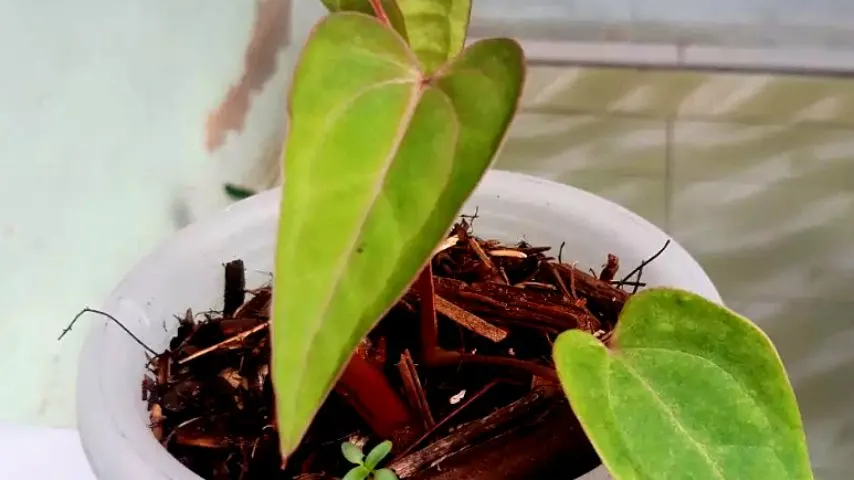
Avoid propagating during autumn and winter if possible.
- Pick a healthy Anthurium Papillilaminum plant and cut a few stems with pruning scissors.
- Make vertical or horizontal cuts between two nodes without damaging the main stem.
- Use some fungicide powder on the roots and let it dry.
- Now, put the cutting in a suitable potting mix.
- Add some rooting hormones to encourage growth.
- A clear plastic bag covers the pot before placing it in indirect sunlight at around 70 °F (21 °C).
Wait till you see some roots and leaves growing from the cutting. You can then transfer the Anthurium Papillilaminum into a slightly larger pot.
Blooms
The Anthurium Papillilaminum plant gives rise to small spadix-like flowers that only appear in summer or throughout the year if the conditions are ideal.
Each bloom lasts for about 2 – 3 months.
Growth
The Anthurium Papillilaminum plant is mainly grown for its significant velvety foliage.
The leaves grow to about 35 inches (90 cm) when fully mature with white veins. In the right surroundings, the Anthurium Papillilaminum grows to 47 inches (120 cm).
Anthurium Papillilaminum actively grows in USDA hardiness zones 11 to 12. Overall, it is a slow-grower that increases in height every few months.
Common Problems for Anthurium papillilaminum
Plant Pests
The Anthurium Papillilaminum plant is prone to several plant pests, including spider mites, mealybugs, and aphids.
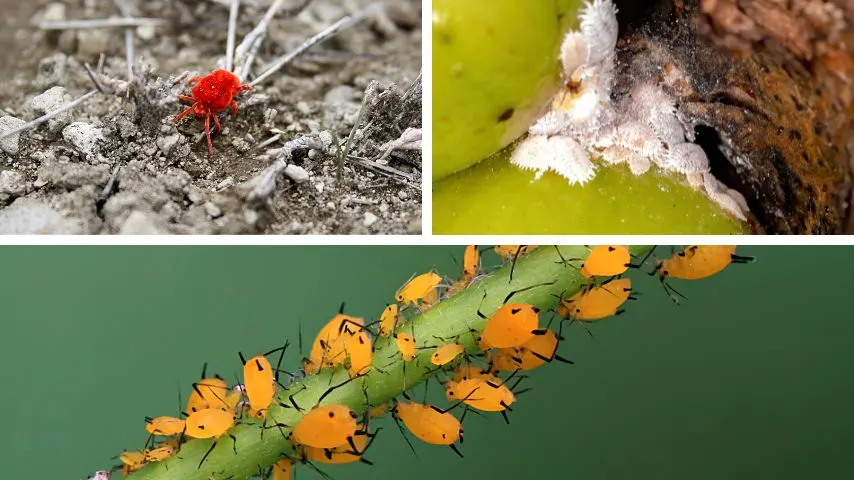
When infected by spider mites, the plant forms yellow halos and drops leaves.
With mealybugs, curling, drooping of foliage, and wilting occur. These waxy bugs wrap around the undersides, leaving cotton-like substances all over the plant.
Aphids are tiny black or gray bugs that cover the entire leaf. Hence, aphids can become a grower’s nightmare as the bugs spread within days.
However, they can be handpicked so you can still control their numbers before significant damage occurs.
Soak a cotton ball in some water-diluted alcohol and wipe it all over the plant’s infected parts to eliminate all these bugs.
You can also scrape off the pests with a blunt knife. Alternatively, treat your plant with neem oil.
Leaf Spot Fungus
A common fungal infection of the Anthurium Papillilaminum plant is leaf spot fungus. This horticultural disease can affect the plant when placed in excess humidity or next to an infected plant.
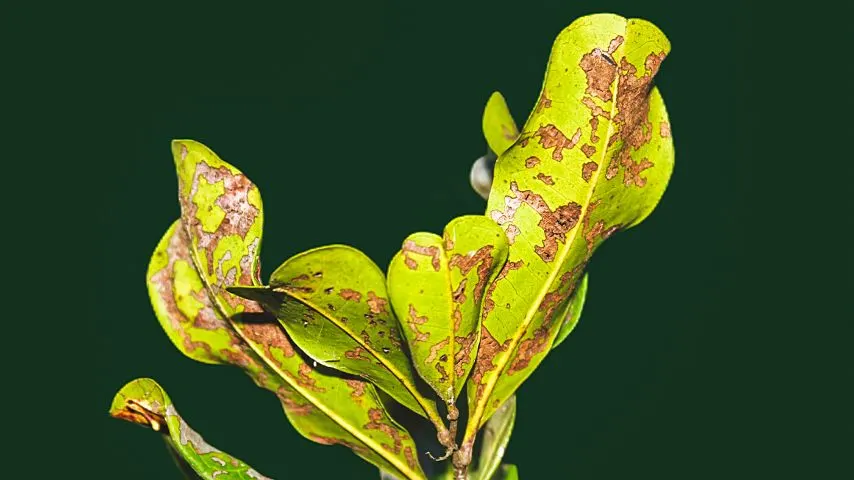
The causative agents include Cercospora, Alternaria, Colletotrichum, and Myrothecium.
The disease presents as black or brown circular patches all along the edges of the plant’s foliage.
Disposing of the Anthurium papillilaminum plant is the best option in cases of severe infestation.
If only a few parts are affected, trim the affected foliage and treat it with fungicides with Benomyl or copper for the rest of the plant.
Alternatively, you can use Agrimycin to treat any bacterial infections.
Brown Leaf Tips
The Anthurium Papillilaminum plant is also seen to form brown leaf tips when its roots fail to transport water and other essential nutrients effectively.
Two common reasons for brown leaf tips include over and underwatering. The brown leaf tips are accompanied by yellowing the leaves’ lower sides.
To treat this problem, cut back the watering until the leaves revive again or increase the watering frequency if the plant is dry.
Also, check the roots for root rot. Trim the infested parts and transplant the Anthurium Papillilaminum plant to a fresh potting mix.
Tips for Growing Anthurium Papillilaminum
- The Anthurium Papillilaminum plant is a rare houseplant, so you may not find it in many stores.
- Therefore, please maintain its ideal environment for the healthiest growth.
- Please water the Anthurium Papillilaminum plant regularly to avoid overheating and drying out of the leaves.
- Place the Anthurium Papillilaminum plant in abundant filtered sunlight for the loveliest blooms.
- The Anthurium Papillilaminum plant should ideally be placed at least three feet from a window.
- Plant the Anthurium Papillilaminum plant in well-draining soil with plenty of nutrients.
- If you have added fertilizer recently, you do not have to add fertilizer every time you repot the Anthurium Papillilaminum plant.
Anthurium papillilaminum red stem
There is a rare hybrid called Anthurium papillilaminum red stem. This Anthurium has the signature dark velvety leaves and red stems. There are a lot of different Anthurium hybrids available. It seems almost harder to get an Anthurium papillilaminum original than a hybrid of this plant.
Frequently Asked Questions
What is the ideal spot for placing an Anthurium Papillilaminum plant?
The Anthurium Papillilaminum plant grows best in bright, indirect sunlight. Therefore, please place it close to a sunny window that receives filtered sunlight indoors. If set outside, grow it under a large tree.
How do I keep an Anthurium Papillilaminum plant blooming?
Keep the plant in bright, dappled sunlight and feed it with diluted phosphorus-rich fertilizers to encourage blooming. Soggy soil, insufficient sunlight and moisture, and infrequent watering can limit their blooms.
How long does an Anthurium Papillilaminum plant last?
The Anthurium Papillilaminum plant’s lifespan primarily depends on its care and surroundings. However, most Anthuriums last for years and bloom all year round, with each bloom lasting 2 – 3 months.
What’s the best fertilizer for an Anthurium papillilaminum?
Most experts recommend diluted phosphorus-rich fertilizers for the Anthurium Papillilaminum plant as they encourage flowering.
What does an overwatered Anthurium üapillilaminum plant look like?
Overwatered plants often undergo rot, which presents as mushy and brown roots and discolored stems. This can occur due to overwatering, insufficient drainage, or soil issues.
Conclusion On Anthurium papillilaminum Care
The Anthurium papillilaminum likes bright, dappled sunlight, occasional watering, and moderate humidity.

Daniel has been a plant enthusiast for over 20 years. He owns hundreds of houseplants and prepares for the chili growing seasons yearly with great anticipation. His favorite plants are plant species in the Araceae family, such as Monstera, Philodendron, and Anthurium. He also loves gardening and is growing hot peppers, tomatoes, and many more vegetables.


